Lactarius sanguifluus, the bleeding milky cap mushroom, is a delicious cousin to saffron milk caps that grows in Europe. They give off a dark red latex as opposed to orange.
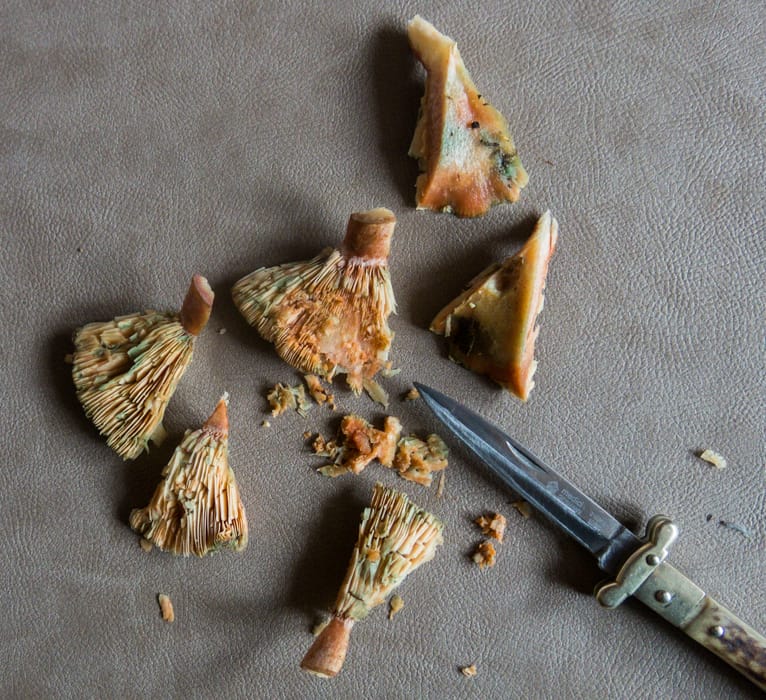
From my experience, finding Lactarius that are good for the table is tough. There's always bugs to compete with, but they just aren't as reliable as a good old chanterelle, black trumpet mushrooms, chicken/hen of the woods, or morels where I live. One year I'll see more than you can pick with a wheelbarrow, then next year I'll see five. Like so many things, their rarity makes me want more.
Many mushroomers will know Lactarius deliciosus saffron milk cap, even if they haven't had it. If you dig through mushroom literature you'll know that there are other milk caps too, and some of them are rated as much better edibles than the saffron milk cap.
My friends from Spain will probably disagree though. On the Iberian peninsula, the rovellones, or niscalos as they're called, are by far the favored wild mushroom to hunt for the table.
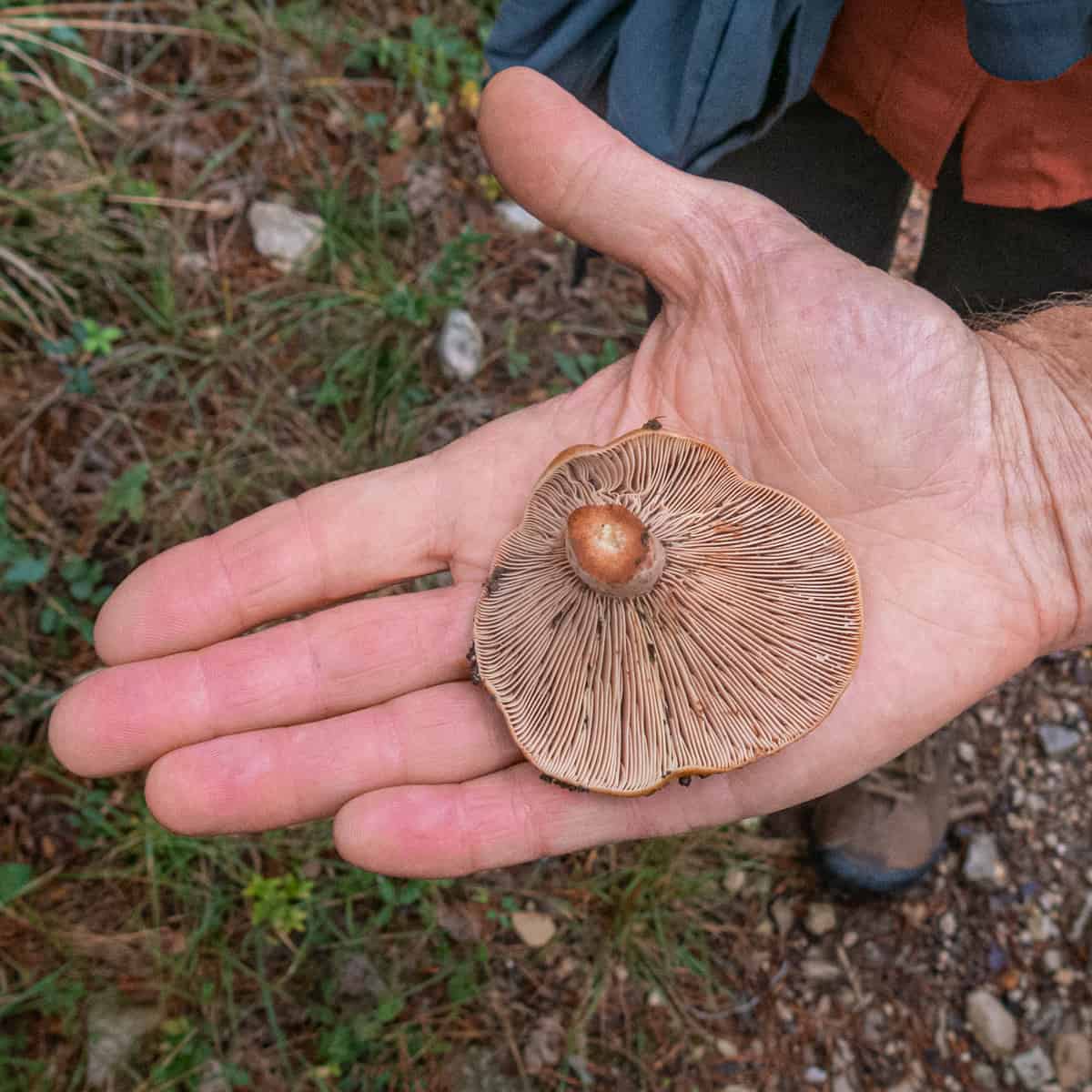
On my wish list to find has been Lactarius sanguifluus-the bleeding milkcap. It resembles the saffron milkcap, but is rusty-red instead of orange. I've heard of people seeing them in the U.S. but sighting seem to be rare, compared to the saffron milkcap which seems more widely distributed.
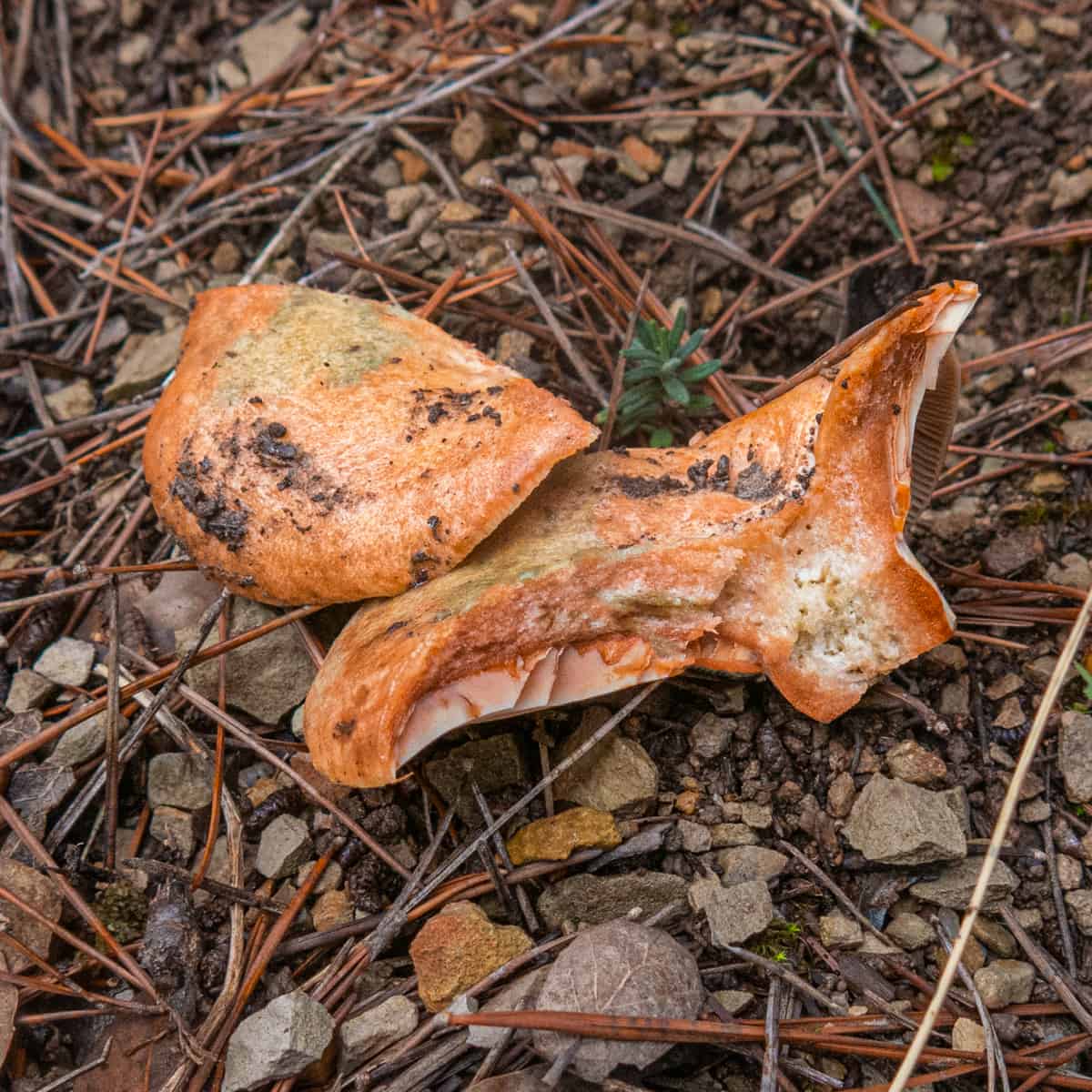
During my recent trip to Provence they were growing along many of the French hiking trails we went through, and were being sold at almost every market that had fresh wild mushrooms.
For the most part, bleeding milkcaps will cook up nice like any other fresh mushroom, but as is the case with Lactarius and some other species (honey mushrooms for example) when pickled or stewed they release a natural mucilage that can get thick and gooey. Searing or blanching them first negates the effect.
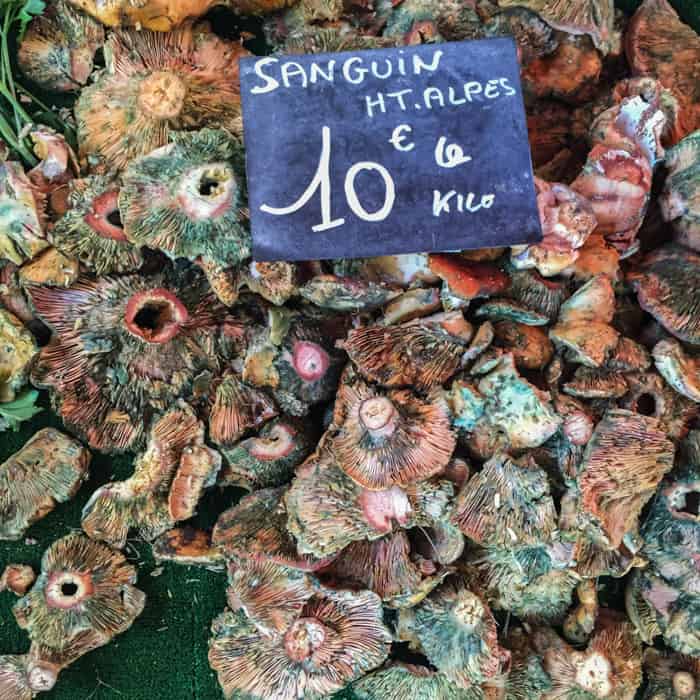
One of the tour guides I had on the trip went to school for botany, so she knew a thing or two about plants and mushrooms.
When she saw me stooping down to pick up a bleeding milkcap, she got excited and told me that many people eat them, but that the flavor isn't as intense as some of the more celebrated mushroom varieties. She said the usual way to enjoy them was marinated, as part of a salad.
The salad here is deceptively simple. I based the dressing off of one I tasted at a pastry chef's house in St. Remy de Provence. Her dressing was so good I had to ask for the recipe, and was surprised when she told me it was just a tiny bit of garlic put through a press, good olive oil, and just the faintest touch of balsalmic vinegar.
Having the garlic mashed completely into a paste, and not using too much is what makes it. The cooked goat cheese crouton is very typical of the salads I ate over there as well-a classic Provencal touch.
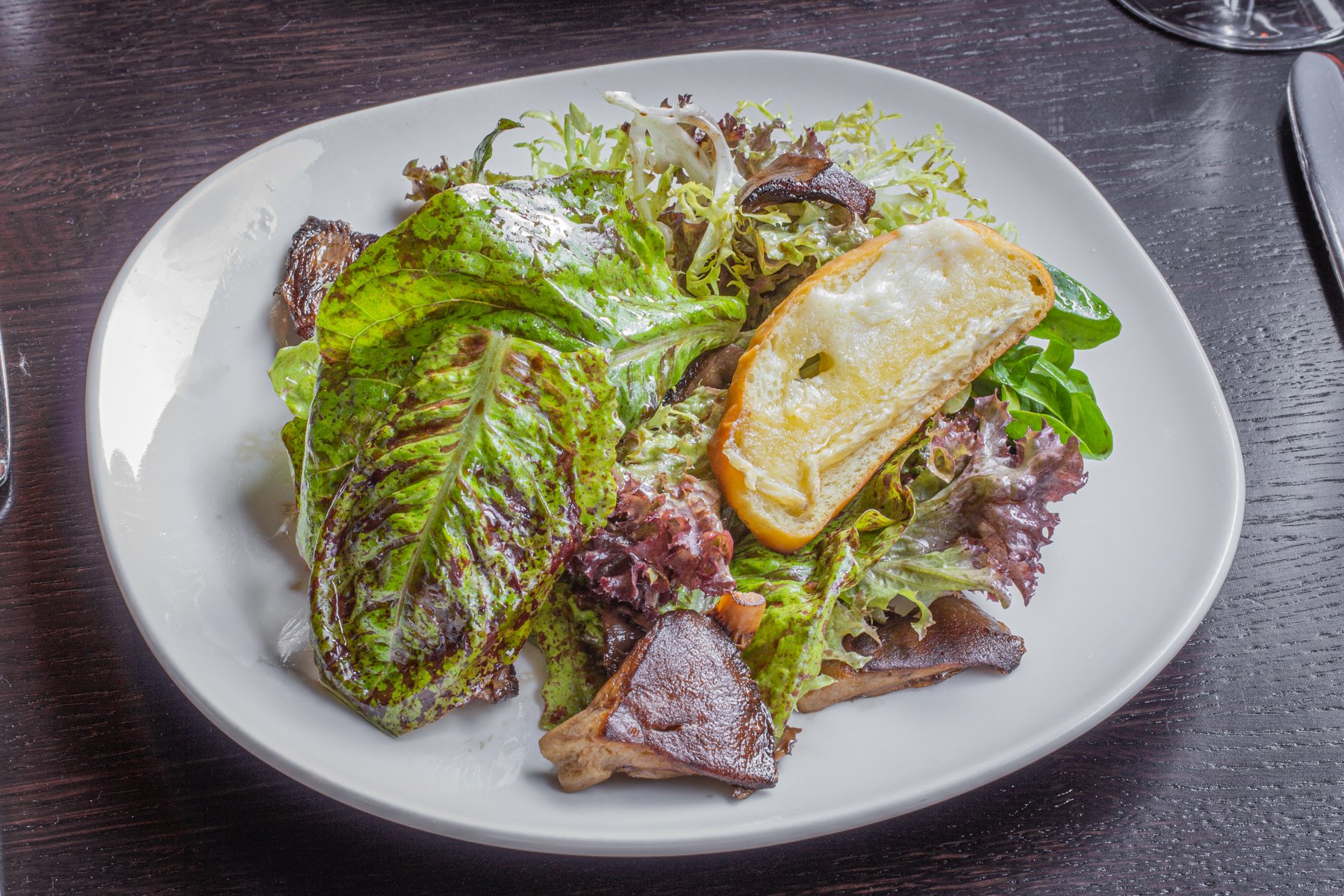
Provencal Milk Cap Salad
Equipment
- 1 mixing bowl
- 1 oven-safe pan for baking the croutons.
Ingredients
- ⅓ cup Marinated milkcaps recipe follows
- 4 ounces mixed young lettuces of your choice
- Small slices of french bread
- 1 ounce lightly aged goat cheese such as Paille de Larzac (a common French goat cheese),
- ¼ teaspoon garlic pressed through a garlic press or minced and crushed with the back of a knife
- Kosher salt and pepper to taste
- 1 teaspoon balsalmic vinegar
- 2 teaspoons extra virgin olive oil
Instructions
- Heat and oven to 350 degrees.
- Put a slice of cheese on the bread and toast it in the oven until the cheese is melted and the bread is just crisp. Meanwhile, mix the garlic with the oil and vinegar in a salad bowl with a fork for a minute, then add the greens and mushrooms and season to taste with salt and pepper.
- Divide the salad between two chilled plates, top each with a warm cheese crouton and serve immediately.
Notes
Nutrition
Marinated Milkcap Mushrooms
Equipment
- 1 10 inch saute pan
- 1 1 quart stainless steel mixing bowl
Ingredients
- 1 lb milkcaps cleaned, trimmed, and quartered or halved if large. If the mushrooms are small, leave them whole.
- ½ teaspoon kosher salt
- ¼ teaspoon fresh ground black pepper
- ½ tablespoon chopped wild thyme or ½ teaspoon dried thyme
- 2 cloves of garlic sliced
- ¼ cup flavorless oil
- ½ cup extra virgin olive oil
- Zest of half a lemon grated
Instructions
- Heat the oil in a non-reactive saucepan, add the mushrooms and cook until lightly browned, then move them to the side of the pan, add the garlic and cook until lightly browned.
- Add the thyme, lemon zest, salt and pepper and stir to combine.
- Remove the mushrooms from the pan with a slotted spoon and put in a container, then top with the extra virgin olive oil, pressing the mushrooms down so that the oil covers them.
- Label, date, and refrigerate for up to 3 days.

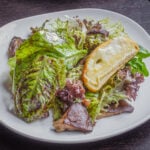
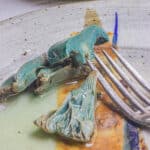
Vicky
I am from Barcelona, Spain, and "rovellons" were THE mushrooms to hunt. They are just delicious sautéed with garlic and parsley. Moved to Nashville, TN, 3 years ago and have not been able to find them anywhere. I also find the mushroom hunting culture to be not so popular as where I come from originally and still keep an eye looking for markets selling wild mushrooms (which seem as hard to find as rovellons in this region).
Nevertheless, excited for morel season 😉 and getting used to receive canned rovellons from my parents.
Awesome webpage!
Alan Bergo
Fun to hear about your experience, and yes the Spanish really seem to love their rovellons. I love seeing the different species preffered in other countries.
Will K.
Recipe sounds great! I’ve collected and eaten several Lactarius species- L. volemus, L. corrugis, L. indigo & L. paradoxus. I thoroughly enjoy the Lactarius volemus & Lactarius corrugis and collect them whenever I find them, but I’m not so keen on the other two, even though the Indigo milky is visually appealing.